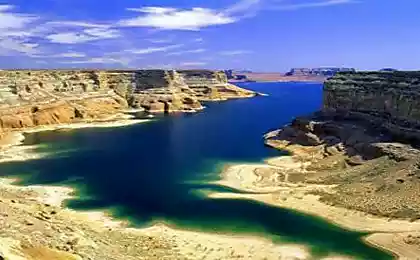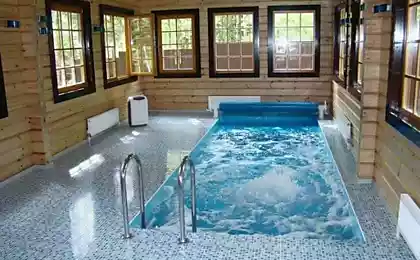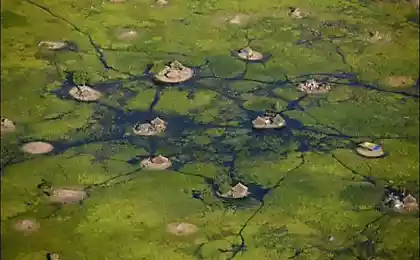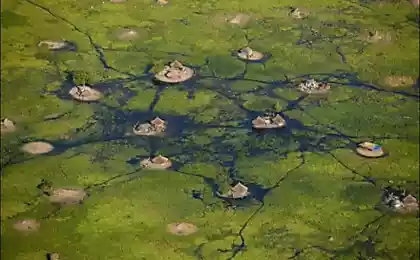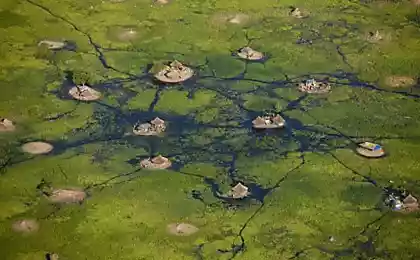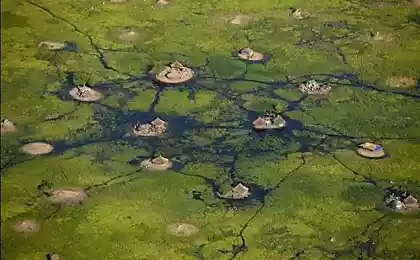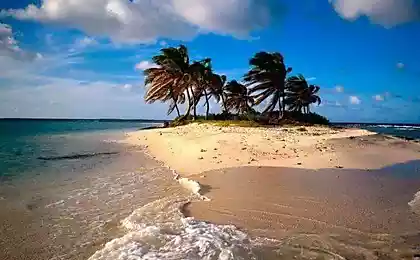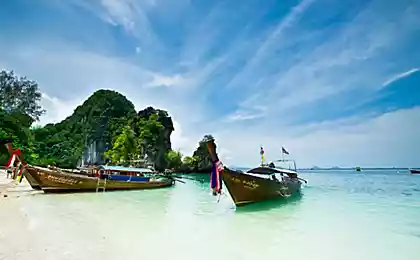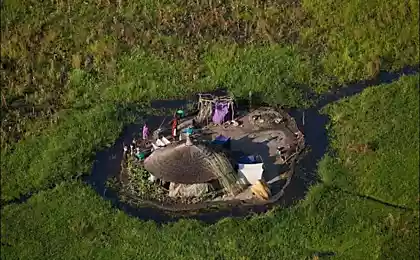561
Add - the swamp in southern Sudan
Sud (also known as the Bahr al Jabal, As Sudd) is a vast swamp in South Sudan, is located in the valley of the White Nile. Is one of the largest wetland in the world and the largest freshwater wetland in the Nile basin.
Sudd is considered the most fertile district in the country. In the area of land home to over 400 species of birds 100 species of mammals. On the territory of the swamps grow a huge number of plants, among them the papyrus, the common reed, hyacinth. The swamp stretches for 500 km from North to South and 200 km from East to West. The average annual rainfall of 700-1000 mm, while in the southern part average higher annual rainfall than in the North. The rainy season lasts from April to September. Measure the volume of water in 1992 showed 50324 billion m3 per year. Since the slope of the White Nile in this place is very small, the river flows very slowly, because of this, nearly 55 % of all water in the river evaporates.
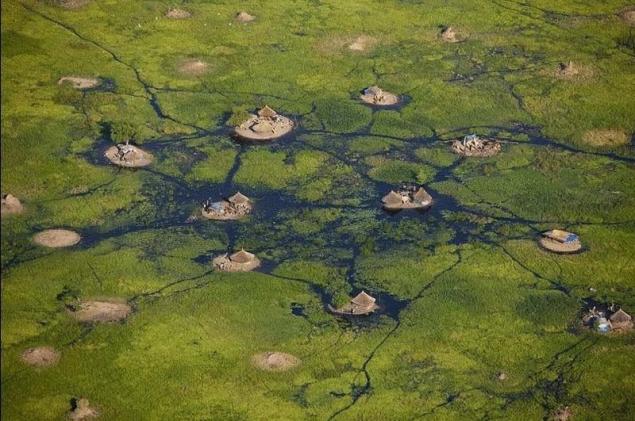
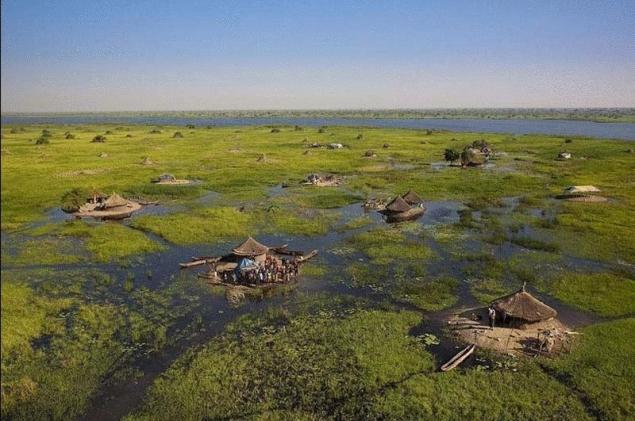
The marshes of Add flock to the river White Nile, more precisely, into the river of al-Jabal (Mountain Nile) and in the center of the river al-ghazal in the West. In Court the river flows through many winding channels pattern which changes with the years.
Papyrus, aquatic grasses and hyacinths grow in dense thickets in the shallow waters where often visit crocodiles and hippos. Sometimes the vegetation creates a floating Islands with a length of up to 30 km away. In the end, such Islands disintegrate.
Sudd considered almost impassable region as for land transport, and water. Reeds, grass, hyacinths and other marsh plants block all means of communication.

For centuries this region has prevented scientists and researchers to travel on the White Nile. Live here a small group of representatives of the herding Nuer tribe.
In the late 1970s, construction began on the canal, Gunkali, which was supposed to pass Sudd and provide direct access to the river, al-Jabal. But the project, which would have drained the marshes of Sudd, was delayed for several years due to the civil war in southern Sudan.
By 1984 when the Sudan people's liberation army ceased all work, was dug only 240 km of the canal of the 360 plan.
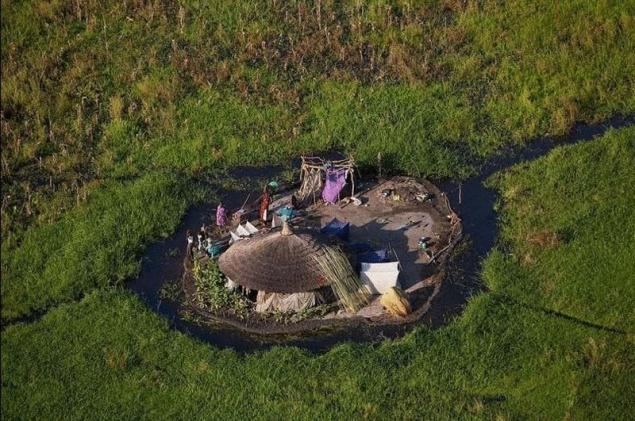
One of the reasons for the construction of the canal would improve the water supply in Egypt. Almost half of the water of the White Nile is lost in the swamps, because it can absorb plants or animals drink. The channel would benefit Egypt and Sudan, but all the flaws of construction would be felt by South Sudan.
However, the construction of the canal would entail certain environmental and social issues such as the disruption of fisheries, the drainage of pastures, the decrease of the groundwater level and the reduction of rain events in the region.
Draining Sudda can also have a negative impact on the environment as it was during the drying of lake Chad or the draining of the Aral sea.


Source: /users/104
Sudd is considered the most fertile district in the country. In the area of land home to over 400 species of birds 100 species of mammals. On the territory of the swamps grow a huge number of plants, among them the papyrus, the common reed, hyacinth. The swamp stretches for 500 km from North to South and 200 km from East to West. The average annual rainfall of 700-1000 mm, while in the southern part average higher annual rainfall than in the North. The rainy season lasts from April to September. Measure the volume of water in 1992 showed 50324 billion m3 per year. Since the slope of the White Nile in this place is very small, the river flows very slowly, because of this, nearly 55 % of all water in the river evaporates.


The marshes of Add flock to the river White Nile, more precisely, into the river of al-Jabal (Mountain Nile) and in the center of the river al-ghazal in the West. In Court the river flows through many winding channels pattern which changes with the years.
Papyrus, aquatic grasses and hyacinths grow in dense thickets in the shallow waters where often visit crocodiles and hippos. Sometimes the vegetation creates a floating Islands with a length of up to 30 km away. In the end, such Islands disintegrate.
Sudd considered almost impassable region as for land transport, and water. Reeds, grass, hyacinths and other marsh plants block all means of communication.

For centuries this region has prevented scientists and researchers to travel on the White Nile. Live here a small group of representatives of the herding Nuer tribe.
In the late 1970s, construction began on the canal, Gunkali, which was supposed to pass Sudd and provide direct access to the river, al-Jabal. But the project, which would have drained the marshes of Sudd, was delayed for several years due to the civil war in southern Sudan.
By 1984 when the Sudan people's liberation army ceased all work, was dug only 240 km of the canal of the 360 plan.

One of the reasons for the construction of the canal would improve the water supply in Egypt. Almost half of the water of the White Nile is lost in the swamps, because it can absorb plants or animals drink. The channel would benefit Egypt and Sudan, but all the flaws of construction would be felt by South Sudan.
However, the construction of the canal would entail certain environmental and social issues such as the disruption of fisheries, the drainage of pastures, the decrease of the groundwater level and the reduction of rain events in the region.
Draining Sudda can also have a negative impact on the environment as it was during the drying of lake Chad or the draining of the Aral sea.


Source: /users/104
